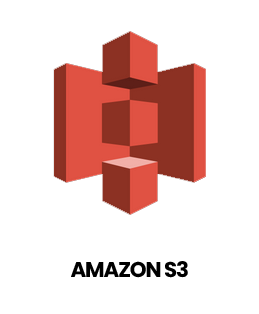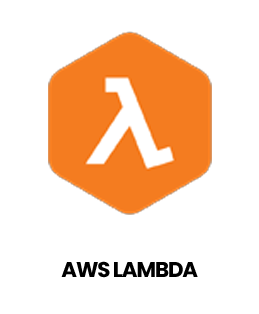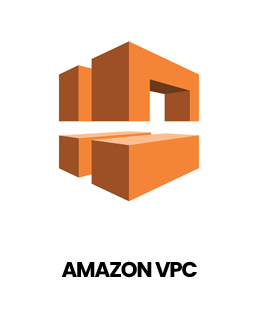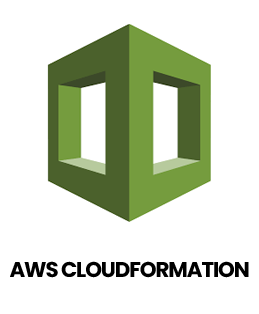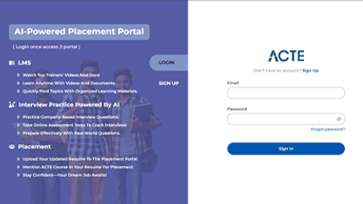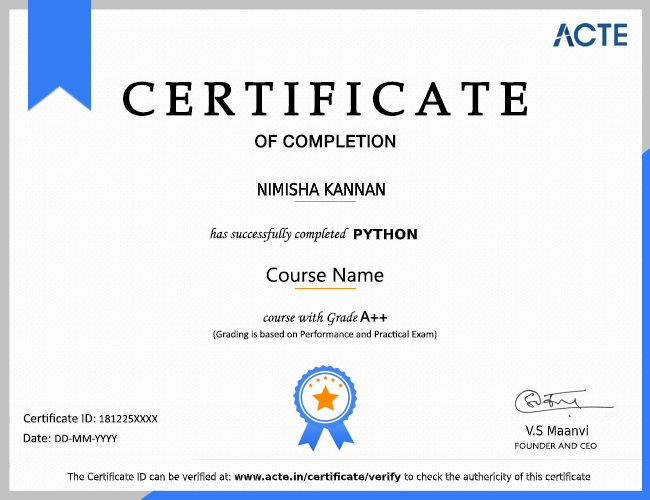With our interactive course content, multimodal delivery, and flexibility in learning, we strive to deliver 100% satisfaction to our customers. ACTE is committed to providing a hassle-free learning experience. Multimodal delivery options along with Industry-recognized certifications.We also Validated and up-to-date course content where it is 99.9% pass rate.We provide 24/7 support at your fingertips. Helping you craft an impressive resume with skills that set you apart
AWS is the undoubted leader in enterprise cloud computing services adoption.AWS-based infrastructure more efficient to increase performance and reduce costs. Use the Well-Architected Framework to improve architectures with AWS solutions. AWS is also making a heavy emphasis on AI, ML and IoT development, so there are many job opportunities around globe.
Amazon Web Services, popularly known as AWS Certification in the market, is a secure cloud service platform. It offers various functions for a business to scale up and grow such as computing power, content delivery, database storage and many other functionalities.
AWS Certification is a good career move for those who want to explore and grow in the field of cloud computing. With the help of AWS Certification , an individual, company, enterprises can get a cloud computing platform. For starting a career in AWS Certification as a fresher, first of all, you need to undergo training for AWS Certification .
Yes, you can get a job even when you are an AWS Certification fresher. But make sure you know all about AWS Certification Cloud. However, only learning about the AWS Certification cloud is not enough to get your hands on a good job.
We are happy and proud to say that we have strong relationship with over 700+ small, mid-sized and MNCs. Many of these companies have openings for AWS Certification . Moreover, we have a very active placement cell that provides 100% placement assistance to our students. The cell also contributes by training students in mock interviews and discussions even after the course completion.
AWS Certification is primarily an Infrastructure as a Service (IaaS) Cloud Platform. You need not know any programming to be successful in AWS Certification “mostly”. However, all of that depends on exact role you get into. If you are writing scripts/programs for automation/control of AWS Certification services, programming knowledge is a must.
- Having basic knowledge of operating systems like Windows OS, Linux etc
- As Visualization play a major role in AWS Certification you need to have the understanding of it
- Networking is an essential skill as all operations on cloud platform involves it.
- Understanding the difference between the Public and Private cloud
- Last but not the least, you must have basic command over coding
- AWS Certification , Python or C# Most architects have a software development background.
- Networking.
- Data storage fundamentals.
- Security foundations.
- AWS Certification service selection.
- Cloud-specific patterns and technologies.
- Communication.
Our courseware is designed to give a hands-on approach to the students in AWS Certification . The course is made up of theoretical classes that teach the basics of each module followed by high-intensity practical sessions reflecting the current challenges and needs of the industry that will demand the students time and commitment.
The future of AWS Certification is bright. Infact, it's the future of modern day computing. Cloud computing, machine learning, IOT, etc are some of the domains which have a lot to offer in the near future.
Depending on how much experience you already have, it’s possible to learn AWS Certification in 3 days with our instructor-led courses comprising of 18 hours of training. If you’re looking to gain AWS Certification certification this will take a little longer, as you’ll also need to prepare for the exam.
- Customization.
- Flexibility & Scalability.
- PaaS Offerings.
- Security.
- Scheduling.
- Recovery.
- Consistency.
- Global Architecture.
REASONS DEVS SHOULD USE AWS LAMBDA
Most Major Languages Are Supported out of the Box
AWS Lambdas can be used today to run
- Node.js,
- Python,
- Java,
- Go,
- C#,
- and even PowerShell.
Although you might be used to writing statefully in these languages, you do have to remember that Lambdas are stateless. They just run your function once, then dispose of everything.
You’ll be able to persist state in your database and rehydrate it of course, but for transactions, you’ll make it all happen in one go. If you’re used to stateful object-oriented programming, you might have to shift your style a bit to utilize the Lambdas.
And if your favourite language is not supported out of the box, don’t worry. AWS provides the ability to provided your own custom runtime. A custom runtime is exactly what you think it is, you can provide support in any programming language including Cobol, if that’s your preferred language.
You Only Pay for What You Use
- As mentioned in the introduction, you’ll only pay for what you use. Billing for functions is based on 100 ms intervals.
- Interestingly, this creates an incentive to use more efficient code if you’re considering the costs. Also, you can tune the maximum resource usage of each Lambda, which affects the base price for your function executions.
To give you a quick idea of what it might cost, consider a function that simply logs an Amazon Cognito authorization. With a minimum memory setting of 128 MB, this Node.js function simply does the following:
console.log(JSON.stringify(event));
This logs to an AWS S3 bucket. It runs in under 100 ms, so the execution time charged for each run is 100 ms. The estimated charges for 10 million executions of this Lambda function per month is around $2.
And that’s only part of the cost savings. Lack of infrastructure maintenance is the bigger story here.
There’s No Infrastructure to Manage
- Managers like this benefit, but there are plenty of reasons for developers to like it too. How many times have you turned a server upsidedown to resolve an issue with a server patch?
- As a developer, would you want to spend a good portion of your time managing servers? Or would you rather be coding up some cool stuff that matters?
- Sure, it’s a fun engineering project to fine-tune a cluster of containers or a VM using shared resources, but you can still have that if you’d like.
- AWS Lambdas are simply another tool in your toolset. You can use them in many applications, but not every situation is right for a Lambda.
- The benefit of having no infrastructure to manage is that you can spin up a new Lambda without having to add a new resource to your infrastructure.
- It’s a good way to extend your existing infrastructure or deploy new services in a microservices architecture. And for some services on AWS, Lambdas are the only real way to perform certain tasks such as logging Cognito login requests. And because there is no infrastructure to maintain you also don’t need to take care about scalability. AWS Lambda automatically scales to support the rate of incoming requests without requiring you to configure anything. There is no limit to the number of requests your code can handle, the performance remains the same when the number of requests increases. Just remember that your code needs to be stateless in order to scale.
It Connects to API Gateway and Other Connection Points
- In a manner of speaking, the API Gateway is the portal to your microcosm within AWS. It’ll connect to many of the cloud services directly, but when you need flexibility, Lambda is your go-to.
- See, it’s where you put custom code to process requests that come in through the API Gateway. Use a Lambda when you need to access several services or do custom processing.
- As data flows through services, you use Lambdas to run custom code on that data stream. This is useful in a Kinesis Pipeline that’s receiving data from things like IoT devices.
- And besides, Lambdas can connect to so many of the other AWS services. It basically operates as an interlink between those services.
- It’s useful when you want to send text messages via Amazon SMSbased on a trigger. Or you can use Lambdas to create tables in DynamoDB. They can connect to Code Commit or even process your Alexa Skills and drive your home automation system via Alexa Smart Home.
- At this point, you’re probably wondering how you might end up developing Lambdas locally. Let’s take a look at how you might do this.
You Can Run AWS Lambdas Locally
- Recently, AWS introduced the SAM (serverless architecture model) CLI. This is the tool for running server lessarchitectures, the core of which are Lambdas, locally.
- With SAM, you create a CloudFormation template to define the application. The template is written in YAML, which makes it about as clean as you can get.
- Then you can invoke the Lambda locally using the SAM CLI. You’ll pass to the Lambda either through the output of a SAM CLI “generate-event” command or by passing a JSON file with static data. SAM requires Python, Docker, and AWS CLI.
- Another option to run Lambdas locally is the serverless framework. The serverless framework emulates AWS using Node.js. It has some limitations when it comes to Lambdas: it can only run Node.js, Python, and Java functions.
- Another thing to keep in mind is that the emulation isn’t perfect. There are some contextual things that won’t quite translate, especially when invoking nested Lambdas. But for the most part, and for cross-cloud interoperability, it has its benefits compared to AWS SAM.



